Salt of the Earth (1954)
“I want to arise, and push everything up with me as I go.”
|
Synopsis: |
|
Genres, Themes, Actors, and Directors:
Response to Peary’s Review: Despite being “called a subversive film in Congress and the New York Times before its release”, this is actually a “pro-human rather than anti-American” film, one “which makes no pitch for revolution — just solidarity against the power elite, encompassing racial brotherhood and sexual equality”. Peary notes that the “script was written with cooperation of the participants in the strike, many of whom act in the film”, and that “we are touched by the characters because they are not epic figures — only when they stand together do they take on heroic proportions.” This engaging film (one that “lives up to the legend”) possesses “many scenes [that] will cause smiles, tears, cheers”, and was selected by Peary (over On the Waterfront, which he doesn’t even nominate) as Best Movie of the Year in his Alternate Oscars, where he refers to it as “the greatest political narrative ever made in the United States.” In his Alternate Oscars review, Peary notes his pleasure in giving the award to a film “made by people blacklisted in Hollywood (director [Herbert] Biberman, producer Paul Jarrico, writer Michael Wilson, cinematographers Leonard Stark and Stanley Meredith, composer Sol Kaplan, [and] actor Will Geer, among them), television workers, and blacks not allowed in Roy Brewer’s segregated International Alliance of Theatrical and State Employees; was cast mostly with the working people the film is about; was condemned in the Hollywood Press, The New York Times, and by RKO box Howard Hughes and members of HUAC; was processed surreptitiously because Hollywood labs refused to handle it; was edited secretly; and was booked into only thirteen theaters nationally (and those theaters were picketed) because Brewer’s IATSE projectionists refused to show it.” With such a lengthy list of constraints, one might expect this movie to be both less polished and more pedantic than it is — but it remains surprisingly engaging, and more relevant than ever. It’s a pleasure to know, as Peary writes from taking with producer Jarrico, that it “has been seen, probably, by more people than any film in history.” Redeeming Qualities and Moments:
Must See? Categories
(Listed in 1001 Movies You Must See Before You Die) Links: |
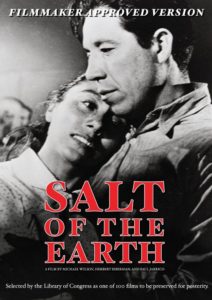
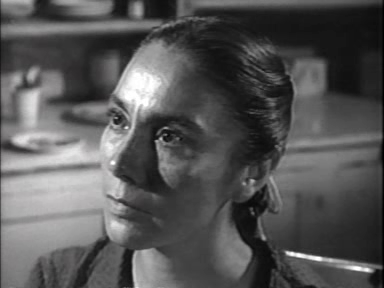
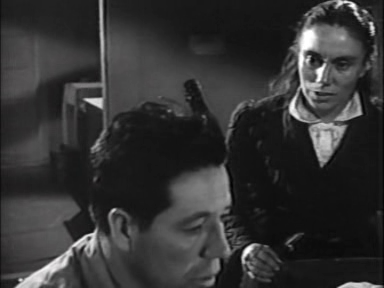
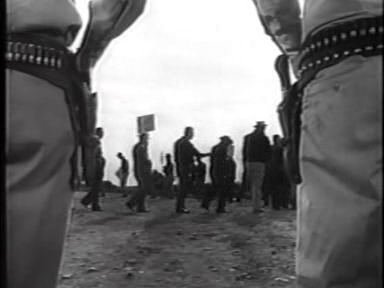
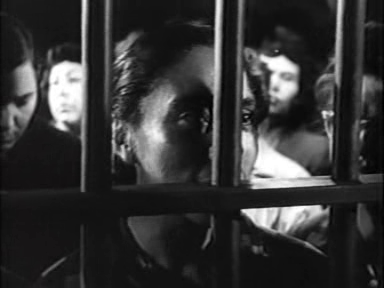
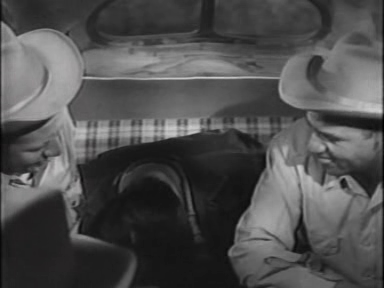

One thought on “Salt of the Earth (1954)”
First viewing. Agreed – a must-see, for its place both in the history of America and cinema. It could also be said that it’s time for a modern-day equivalent.
This film gains strength in light of other (probably countless) government and corporation acts against average people who rise up in legitimate protest against inequality and abuse of power.
One need only look at a few such examples:
– Christopher Leonard’s recent book ‘Kochland’ describes in detail the horrible lengths that Charles Koch has gone to to undermine unions. To be fair, the book also points out certain weaknesses in the unions themselves – but that doesn’t take away from Koch’s heinous attempts at doing away with unions altogether.
– Whistleblower Edward Snowden’s current exile due to the violation of the Espionage Act – which holds him subject to punishment without a trial… in order to hold him ‘accountable’ for bringing to light what is wrong in our government.
– Attempts by the US government to stifle Costa-Gavras’ 1982 film
‘Missing’ due to its accurate depiction of the US-backed Chilean coup of 1973. Details surrounding the secrecy of US involvement can be found in Nancy MacLean’s recent book (‘Democracy in Chains’) – about the middle man – the ‘architect’ – of the hidden US-Chile bridge: James McGill Buchanan.
One could – no doubt – go on and on.
More than anything else, ‘Salt of the Earth’ speaks to the issue of inequality – an issue that remains vital today; not just for minorities but also for whites without significant money and positions of power.
Aside from its content, it’s also a rather well-made film, considering its small budget. Films such as this are important for their testament – as mirrors of the injustice that always seems to threaten our nation in various ways… and would do so with more success if the nation’s people did not rise up in unified protest.